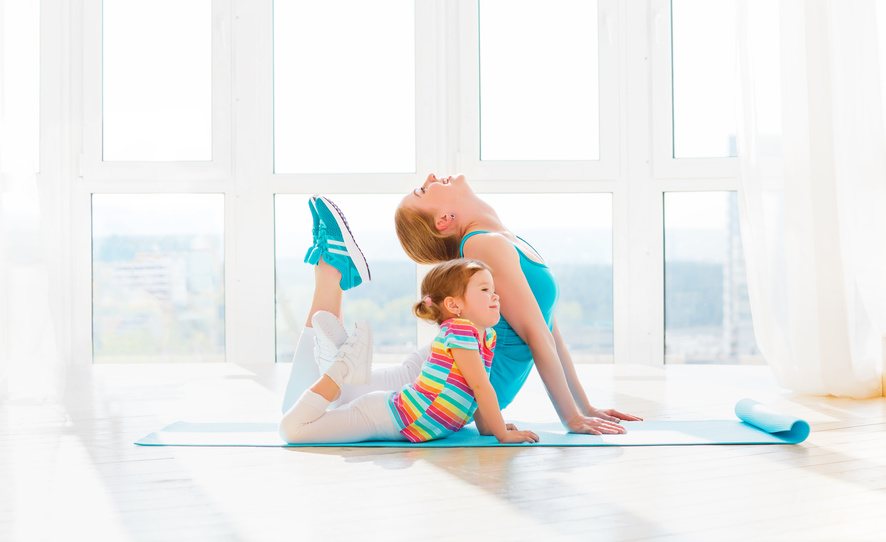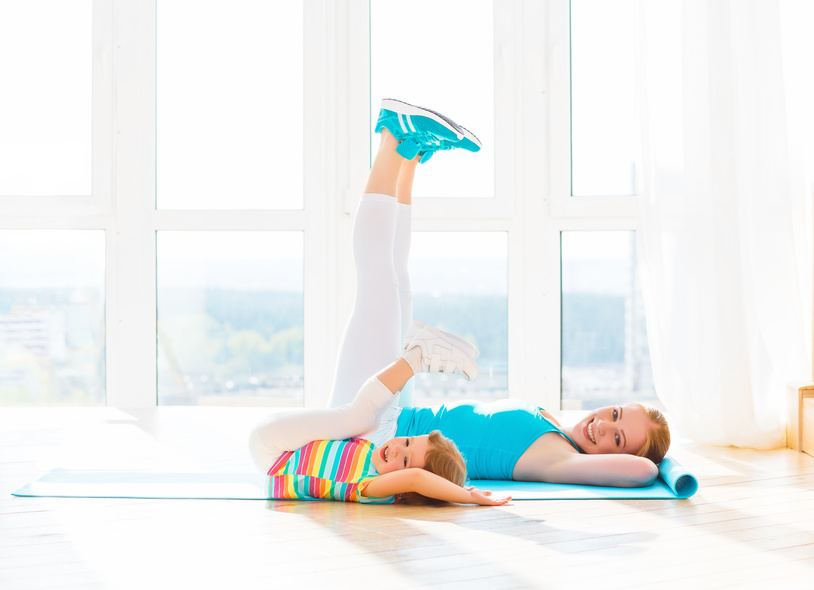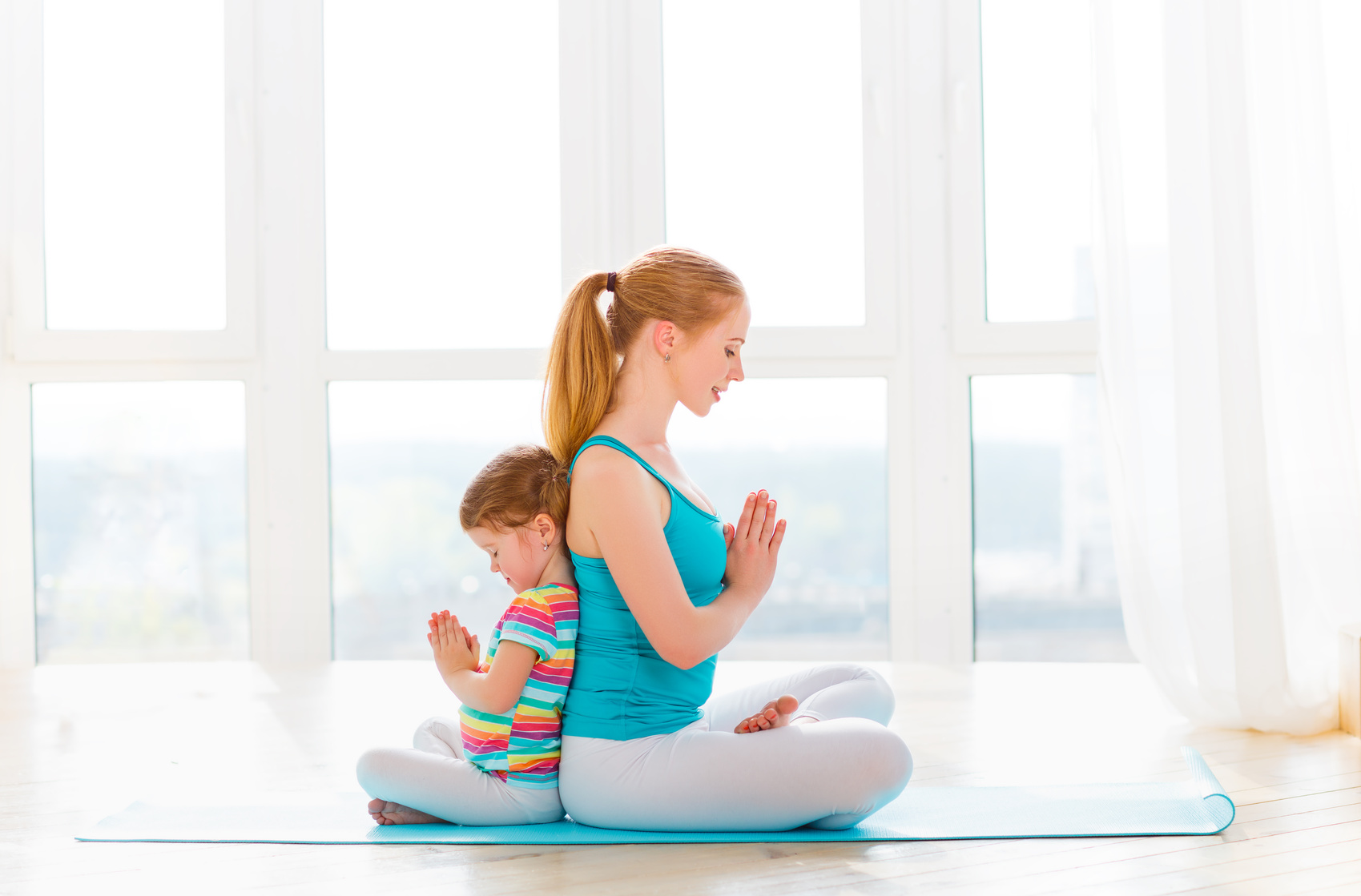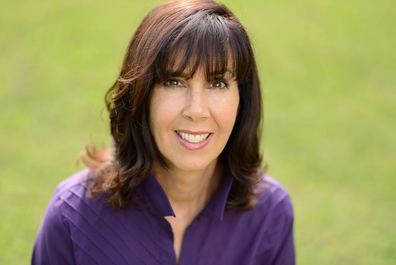View basket (0 items $0.00)

Playtime Yoga: Teaching Yoga to Toddlers
As a teacher of “Toddler and Me Yoga,” a class designed for children aged 12 to 36 months, I’m often asked, “How can you possibly expect to teach yoga for that age range?”
The questions usually continue with, “Aren’t they full of energy?” Yes! “Don’t they have short attention spans?” Yes! “Isn’t it chaotic?” Not usually.
 Children of this age are naturally curious and sponge-like. They want to play and learn. It’s an important developmental time socially, physically and emotionally.
Children of this age are naturally curious and sponge-like. They want to play and learn. It’s an important developmental time socially, physically and emotionally.
They are experiencing life through their eyes, ears, and sense of touch. They are learning and expressing through language. Toddler yoga provides an introduction to yoga with the freedom for the children to explore in a supervised setting along with their parent or caregiver.
Yoga Class for Toddlers
What is a typical 45-minute class like? Since children of this age crave repetition, many basic songs and yoga poses are repeated each week. (They will remind you if you’ve forgotten any!) Music with associated movements and books are wonderful ways to help teach. Children learn by watching adults, so parents and caregivers are encouraged to participate in the movements and poses.
As an instructor of toddlers, you quickly learn what activities the children prefer and when it’s time to change course. They enjoy various props such as a pinwheel or Hoberman sphere to practice deep breaths, a scarf held overhead to become a rainbow, or a play squirrel to climb their leg while in Vrksasana (Tree Pose).
 Making Yoga Poses Appropriate for Toddlers
Making Yoga Poses Appropriate for Toddlers
Any basic yoga pose can be made appropriate for toddlers. For example, a basic Surya Namaskar (Sun Salutation) becomes reaching the arms up to touch the sun and hanging down to tickle the toes. Vipariti Karani (Legs Up the Wall Pose) pairs well with the “Itsy Bitsy Spider” song.
Holding hands for “Row, Row, Row Your Boat” is an opportunity for a modified Upavistha Konasana (Seated Angle Pose). “Ring Around the Rosie” morphs into “Ring Around with Yogis.”
A toddler yoga class has lots of hugs and kisses! Throughout the class, parents and caregivers are encouraged to celebrate every attempt at a yoga pose by their child. Teaching yoga to children should be a fun, silly and playful time.
Swami Saryananda Saraswati says, “The yoga experience for the child of this age should not come through lessons but through play.”
He adds, “While enjoying the play with the children, the yoga teacher does not want to simply entertain but to provide an environment for utilization of all yoga activities for unfolding and balancing the total personality of the child. As the child grows older and enters school, the presentation of yoga can take on a more structured form.” (Adjustments of a child’s yoga postures generally do not occur until the age of eight.) (1)
We’ve all read about and some of us know first hand the benefits of yoga for children. Do you think you would be interested in teaching yoga for this age? Who is considered the best suited to teach toddlers?
Attributes of Good Teachers for Young Children: (2)

You feel passionate about working with children
-
You enjoy being with children
-
You are patient, calm, loving and warm
-
You have a sense of humor
-
You are flexible, creative and organized
-
You are self-aware and positive
There are quite a few organizations available to provide teacher training for children’s yoga. You can find these on Yoga Alliance’s website.
More information on Yoga and Children read this article from YogaUOnline and Teressa Asencia - Can Teaching Yoga In Schools Lead to a Better World?
Study teaching yoga to children in this YogaUOnline course with Mira Binzen - Yoga for Stable and Calm Kids: Creating Greater Balance and Integration.
 Susan Kain, e-RYT, RCYT, has taught yoga for seventeen years. She is a former educator with over thirty years’ experience in working with children. In preparation for toddler and preschool classes, Susan has created various picture books. The first to be published is entitled, I Can Be One Too! A Child’s Book of Yoga Poses. You can reach Susan through her website at www.susankain.com.
Susan Kain, e-RYT, RCYT, has taught yoga for seventeen years. She is a former educator with over thirty years’ experience in working with children. In preparation for toddler and preschool classes, Susan has created various picture books. The first to be published is entitled, I Can Be One Too! A Child’s Book of Yoga Poses. You can reach Susan through her website at www.susankain.com.
References
Active Start, guidelines available from The National Association for Sport and Physical Education (NASPE) for children from birth to the age of five, indicate children aged 12-36 months should have at least 30 minutes of adult-led structured physical activity every day.
(1.) See Saraswati, S.S., Yoga Education for Children, Chapter 3 and 4.
(2.) McMullen, M.B., 2013. National Association for the Education of Young Children. http:/www.journal.naeyc.org
Featured Courses








